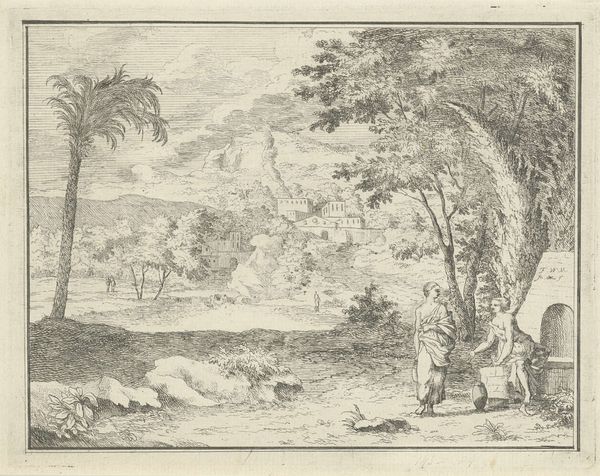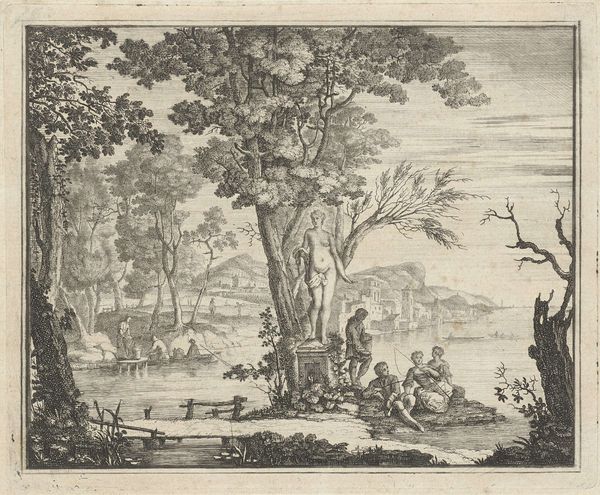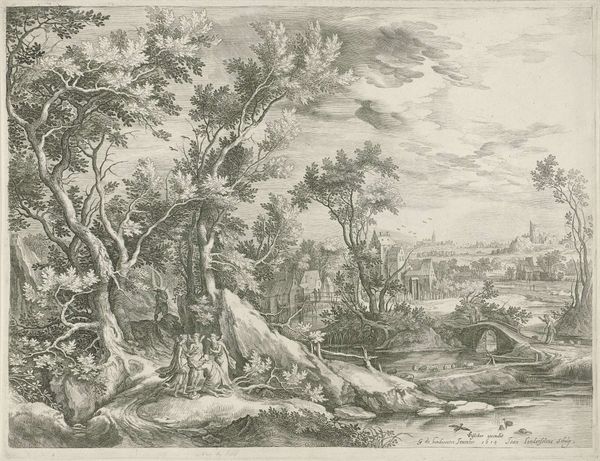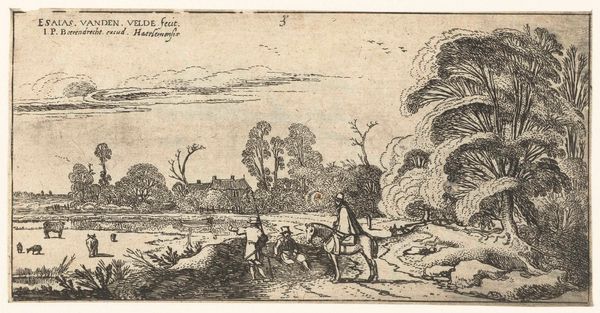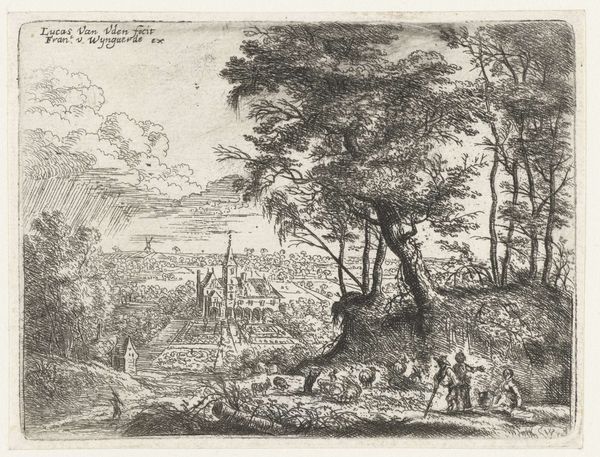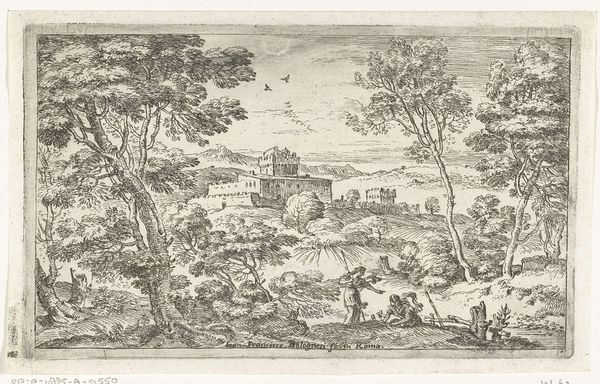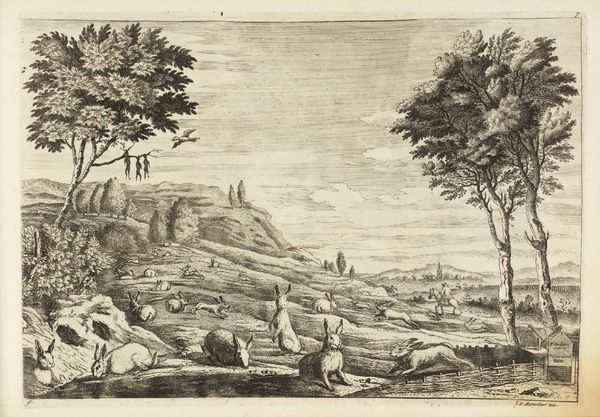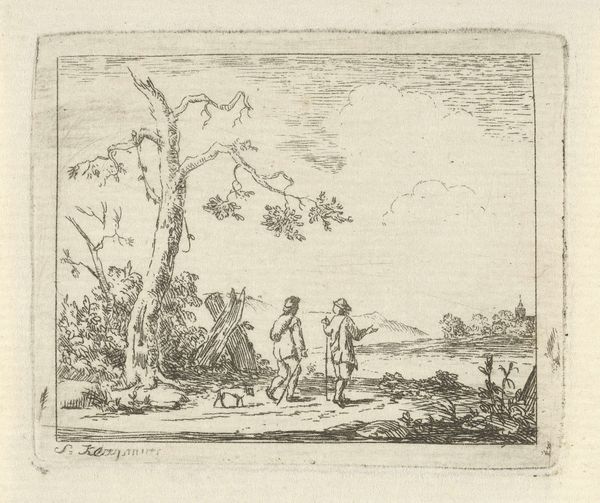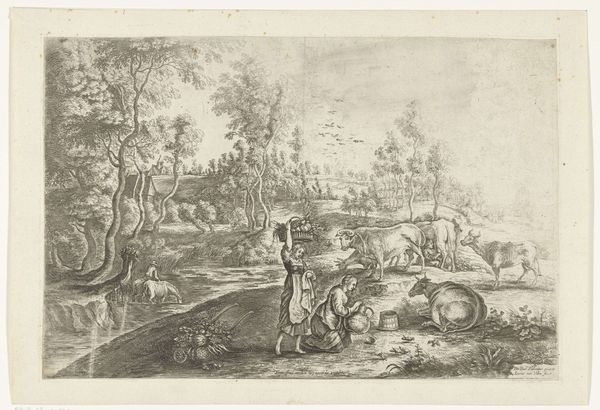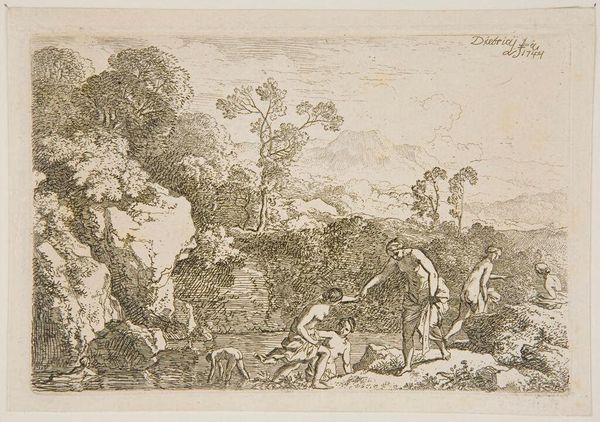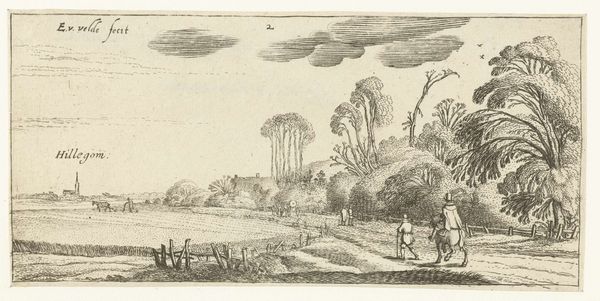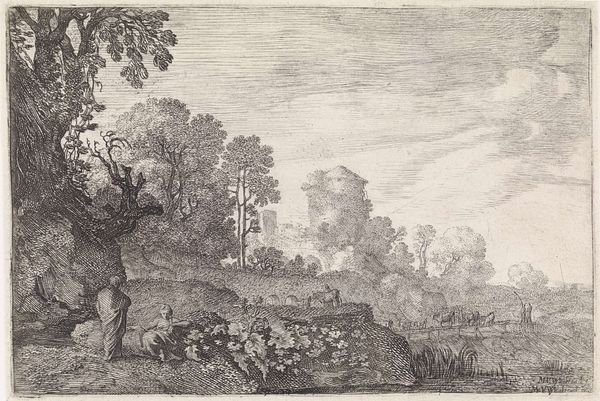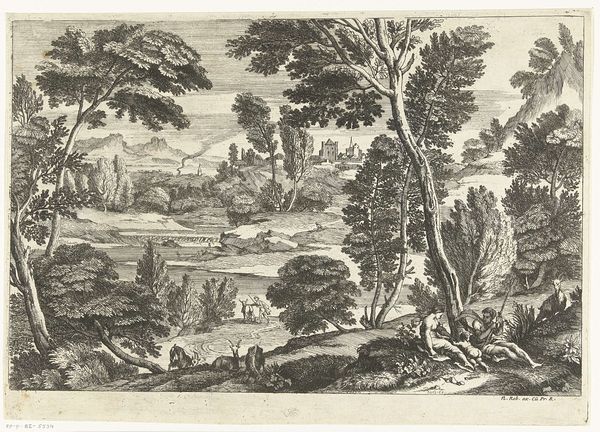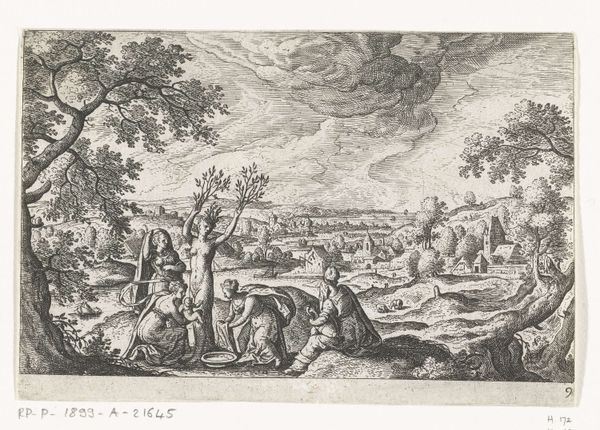
drawing, print, etching, paper, ink
#
drawing
#
narrative-art
#
pen drawing
#
dutch-golden-age
# print
#
etching
#
landscape
#
paper
#
ink
#
genre-painting
Dimensions: height 88 mm, width 173 mm
Copyright: Rijks Museum: Open Domain
Esaias van de Velde made this etching, 'Rider and walkers on a road near Lisse', in the Netherlands in the early 17th century. Through seemingly objective observations of the Dutch countryside, the artist and his contemporaries helped to construct a new sense of national identity during the Dutch Golden Age. This seemingly simple scene is rich with social context. The figures depicted on the road are carefully arranged to suggest a social hierarchy, with the rider on horseback occupying the highest position, and the walkers on foot placed lower in the composition. Van de Velde was part of a movement of artists that broke away from the established art institutions of the time, such as the guilds, to create art for a wider audience. The social and economic changes in the Netherlands at this time contributed to the development of a new art market. Etchings such as this one were relatively inexpensive to produce, and they were sold at local markets. If you are interested in learning more, you might consult period maps and travel journals to learn more about the geography and culture of this region. By examining such resources, we come to understand how art is as much a product of its time as it is a reflection of the artist's vision.
Comments
No comments
Be the first to comment and join the conversation on the ultimate creative platform.
